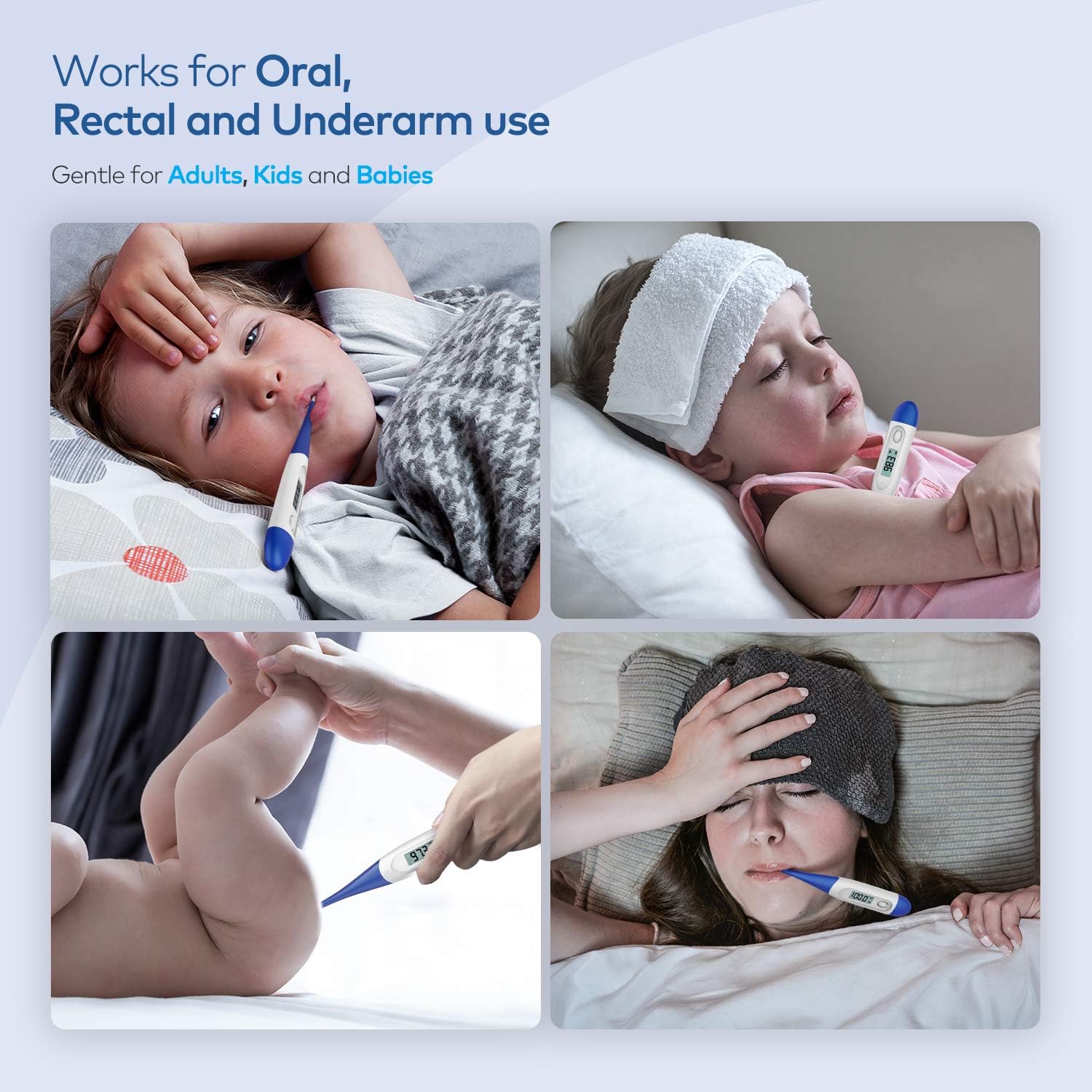On and Off Fever for 3 Days: When to Worry About Fever in Adults
What causes a persistent low-grade fever in adults. How to treat a fever that comes and goes for several days. When should you see a doctor for an intermittent fever. What are the warning signs of a serious fever in adults.
Understanding Low-Grade Fevers: Causes and Symptoms
A low-grade fever is defined as a body temperature between 98.7°F and 100.4°F (37.05°C and 38.0°C) that persists for more than 24 hours. While many people consider 98.6°F (37°C) to be normal, body temperature can actually vary throughout the day and from person to person. A persistent low-grade fever that lasts for several days can be a sign of an underlying condition that requires medical attention.
Common causes of low-grade fevers include:
- Viral infections like the common cold or flu
- Bacterial infections
- Urinary tract infections (UTIs)
- Respiratory infections like bronchitis or pneumonia
- Stress
- Certain medications
- Autoimmune disorders
- Thyroid issues
Accompanying symptoms may include fatigue, body aches, headache, and loss of appetite. In some cases, a low-grade fever may be the only noticeable symptom of an underlying condition.

When Should Adults Seek Medical Attention for a Fever?
While most low-grade fevers are not cause for immediate concern, there are certain situations where medical attention is warranted. Adults should consult a doctor if:
- The fever persists for more than 3 days
- The temperature rises above 103°F (39.4°C)
- The fever is accompanied by severe symptoms
Is immediate medical care necessary for a fever? In some cases, yes. Seek emergency medical attention if a fever is accompanied by:
- Severe headache
- Stiff neck
- Confusion or altered mental state
- Difficulty breathing
- Persistent vomiting
- Seizures
- Unusual skin rash
- Severe pain when urinating
Diagnosing the Underlying Cause of Persistent Low-Grade Fevers
Identifying the root cause of a persistent low-grade fever often requires a thorough medical evaluation. Your doctor may perform the following:
- Physical examination
- Detailed medical history
- Blood tests to check for infections or inflammatory markers
- Urinalysis to rule out urinary tract infections
- Imaging studies like X-rays or CT scans if respiratory issues are suspected
- Specialized tests for autoimmune disorders or thyroid function
Can blood tests accurately diagnose the cause of a persistent fever? While blood tests can provide valuable information, they are often just one piece of the diagnostic puzzle. Your doctor will consider the results in conjunction with your symptoms and physical examination findings to determine the most likely cause of your fever.

Treating On and Off Fevers: Home Remedies and Medical Interventions
The treatment for an intermittent fever depends on its underlying cause. In many cases, especially with viral infections, the fever will resolve on its own with proper rest and hydration. However, there are steps you can take to manage symptoms and promote recovery:
Home Remedies for Low-Grade Fevers
- Rest and get plenty of sleep
- Stay hydrated by drinking water, clear broths, and electrolyte solutions
- Use over-the-counter fever reducers like acetaminophen or ibuprofen as directed
- Apply cool compresses to the forehead or take a lukewarm bath
- Dress in light, breathable clothing
Medical Interventions for Persistent Fevers
If an underlying condition is identified, your doctor may recommend specific treatments such as:
- Antibiotics for bacterial infections
- Antiviral medications for certain viral infections
- Treatment for autoimmune disorders or thyroid issues
- Adjustment of medications if the fever is drug-induced
Should you try to reduce a low-grade fever or let it run its course? In many cases, a low-grade fever is your body’s natural defense mechanism against infection. Unless the fever is causing significant discomfort or is accompanied by other concerning symptoms, it’s often best to let it run its course while ensuring proper rest and hydration.

Distinguishing Between Adult and Pediatric Fever Concerns
It’s important to note that fever guidelines differ for adults, children, and infants. While adults can generally tolerate higher temperatures for longer periods, infants and young children require more careful monitoring and may need medical attention sooner.
Fever Guidelines for Different Age Groups
- Adults: Seek medical attention for fevers above 103°F (39.4°C) or those lasting more than 3 days
- Children: Consult a pediatrician for persistent low-grade fevers lasting more than 3 days or if accompanied by concerning symptoms
- Infants under 3 months: Any fever, even a slightly elevated temperature, warrants immediate medical evaluation
Why are infants more vulnerable to complications from fevers? Infants have immature immune systems and are more susceptible to serious infections. Their bodies also have a harder time regulating temperature, making them more prone to rapid temperature changes that can be dangerous if not properly managed.

The Impact of Chronic Low-Grade Fevers on Overall Health
While occasional low-grade fevers are typically not harmful, chronic or recurrent low-grade fevers can have a significant impact on overall health and well-being. Persistent fevers can lead to:
- Fatigue and decreased energy levels
- Reduced appetite and potential weight loss
- Weakened immune system
- Disrupted sleep patterns
- Decreased cognitive function and concentration
Can chronic low-grade fevers indicate a more serious underlying condition? In some cases, yes. Persistent low-grade fevers may be a sign of conditions such as:
- Chronic infections
- Autoimmune disorders like lupus or rheumatoid arthritis
- Certain types of cancer, particularly lymphomas
- Metabolic disorders
If you experience recurrent low-grade fevers over an extended period, it’s crucial to consult with a healthcare professional to identify and address any underlying issues.
Fever Management Strategies for Different Types of Infections
The approach to managing a fever often depends on the type of infection causing it. Here’s a breakdown of common infections and their respective management strategies:

Viral Infections
Viral infections like the common cold or flu are the most frequent cause of low-grade fevers. Management typically includes:
- Rest and hydration
- Over-the-counter pain relievers and fever reducers
- Antiviral medications in severe cases or for high-risk individuals
Bacterial Infections
Bacterial infections, such as strep throat or urinary tract infections, often require medical intervention:
- Antibiotic treatment prescribed by a doctor
- Fever management with over-the-counter medications
- Increased fluid intake to prevent dehydration
Respiratory Infections
For respiratory infections like bronchitis or pneumonia, management may include:
- Prescription medications (antibiotics for bacterial pneumonia, antivirals for influenza)
- Rest and hydration
- Fever reduction with appropriate medications
- Breathing treatments or inhalers if necessary
How long should you wait before seeking medical attention for a persistent cough with a low-grade fever? If a cough accompanied by a low-grade fever lasts for more than two weeks, it’s advisable to consult a healthcare provider. This could indicate a more serious respiratory infection or other underlying condition that requires medical evaluation.

The Role of Stress and Medications in Causing Low-Grade Fevers
While infections are the most common cause of low-grade fevers, it’s important to consider other factors that can affect body temperature. Stress and certain medications can sometimes lead to persistent low-grade fevers.
Stress-Induced Fevers
Chronic stress can impact the body’s temperature regulation, potentially leading to low-grade fevers. This occurs due to:
- Increased production of stress hormones like cortisol
- Activation of the immune system
- Disruption of the body’s natural circadian rhythm
Managing stress through relaxation techniques, regular exercise, and adequate sleep can help alleviate stress-induced fevers.
Medication-Induced Fevers
Some medications can cause low-grade fevers as a side effect. These may include:
- Antibiotics
- Antihistamines
- Blood pressure medications
- Antiseizure drugs
- Some antidepressants
Can changing medication dosage or timing help reduce fever side effects? In some cases, yes. If you suspect your medication is causing a persistent low-grade fever, consult your healthcare provider. They may adjust your dosage, change the timing of your medication, or switch you to an alternative drug to alleviate this side effect.

Understanding the various causes of persistent low-grade fevers and knowing when to seek medical attention is crucial for maintaining overall health. While most low-grade fevers are not cause for immediate concern, paying attention to accompanying symptoms and duration can help you determine when professional medical evaluation is necessary. Always consult with a healthcare provider if you have concerns about a persistent fever or other unusual symptoms.
Persistent Low-Grade Fever in Kids and Adults: Causes and Treatme
We include products we think are useful for our readers. If you buy through links on this page, we may earn a small commission Here’s our process.
Healthline only shows you brands and products that we stand behind.
Our team thoroughly researches and evaluates the recommendations we make on our site. To establish that the product manufacturers addressed safety and efficacy standards, we:
- Evaluate ingredients and composition: Do they have the potential to cause harm?
- Fact-check all health claims: Do they align with the current body of scientific evidence?
- Assess the brand: Does it operate with integrity and adhere to industry best practices?
We do the research so you can find trusted products for your health and wellness.
Read more about our vetting process.
Was this helpful?
Long lasting low-grade fevers can occur with viral or bacterial infections, stress, or certain medications. Other health conditions like thyroid issues or autoimmune diseases can also cause this symptom.
Other health conditions like thyroid issues or autoimmune diseases can also cause this symptom.
What is a low-grade fever?
A fever is when a person’s body temperature is higher than normal. For most people, normal is roughly 98.6° Fahrenheit (37° Celsius).
“Low-grade” means that the temperature is slightly elevated — between 98.7°F and 100.4°F (37.05°C and 38.0°C) — and lasts for more than 24 hours. Persistent (chronic) fevers are typically defined as fevers lasting more than 10 to 14 days.
A fever can mean a lot of different things, but most low-grade and mild fevers are nothing to worry about. Most often, an increase in body temperature is a normal response to an infection, like a cold or the flu. But there are many other less common causes of a persistent low-grade fever that only a doctor can diagnose.
A fever alone may not be a reason to call a doctor. Yet, there are some situations where you should get medical advice, especially if a fever lasts more than a few days. The presence of a fever can mean different things for adults, infants, and children.
The presence of a fever can mean different things for adults, infants, and children.
Adults
For an adult, a fever isn’t usually a cause for concern unless it goes above 103°F (39.4°C). You should see a doctor if you have a fever higher than this.
If your fever is lower than 103°F, but lasts for more than three days, you should also visit a doctor.
You should seek immediate medical attention if any of these signs or symptoms accompanies a fever:
- strange rash that rapidly worsens
- confusion
- persistent vomiting
- seizures
- pain when urinating
- stiff neck
- severe headache
- throat swelling
- muscle weakness
- difficulty breathing
- hallucinations
Infants
For infants under 3 months old, even a slightly higher than normal temperature can mean a serious infection.
Call your pediatrician for a low-grade fever if your baby seems unusually irritable, lethargic, or uncomfortable or has diarrhea, a cold, or a cough. In the absence of other symptoms, you should also see a doctor if a fever lasts continuously for more than three days.
In the absence of other symptoms, you should also see a doctor if a fever lasts continuously for more than three days.
Children
If your child is still making eye contact with you, drinking fluids, and playing, then a low-grade fever isn’t likely a cause for alarm. But you should still visit a doctor if a low-grade fever lasts for more than three days.
Also call your child’s pediatrician if your child:
- is irritable or appears very uncomfortable
- has poor eye contact with you
- vomits repeatedly
- has severe diarrhea
- has a fever after being in a hot car
Viral infections, like the common cold, are the most common cause of a persistent low-grade fever, but there are other less common causes to consider.
Respiratory infections
Your body naturally raises its body temperature to help kill the bacteria or virus causing an infection. Colds or the flu are caused by viruses. Colds in particular can cause a low-grade fever that lasts more than a few days.
Other symptoms of a cold include:
- stuffy or runny nose
- sore throat
- sneezing
- cough
- fatigue
- lack of appetite
Viral pneumonia and bronchitis are two other types of respiratory infections that can also cause a low-grade fever. Along with a fever, chills, and a sore throat, pneumonia and bronchitis come with a cough that persists for weeks.
In children, it’s common to experience “back-to-back” viral infections. This can make it seem like the fever is lasting longer than it should be.
Treatment for viral infections involves rest and fluids until your body takes care of the infection. You can take acetaminophen for reducing a fever if your symptoms are really bothersome. Fevers are important in helping your body fight off certain infections, so sometimes it’s best to wait it out.
If the infection is more serious, your doctor may prescribe antibiotics, antiviral drugs, or other medications to help treat the infection.
Urinary tract infections (UTIs)
Persistent fever can signal a hidden urinary tract infection in both children and adults. A UTI is caused by a bacterial infection. Other symptoms include pain and burning while urinating, frequent urination, and bloody or dark urine.
A doctor can examine a sample of urine under a microscope to diagnose a UTI. Treatment involves a course of antibiotics.
Medications
A low-grade fever can occur about 7 to 10 days after starting a new medication. This is sometimes called drug fever.
Drugs associated with a low-grade fever include:
- beta-lactam antibiotics, such as cephalosporins and penicillins
- quinidine
- procainamide
- methyldopa
- phenytoin
- carbamazepine
If your fever is related to a medication, your doctor may adjust your dosage or recommend a different drug. The fever should disappear once the medication is stopped.
Teething (infants)
Teething usually occurs between 4 and 7 months of age. Teething can occasionally cause mild irritability, crying, and a low-grade fever. If the fever is higher than 101°F, it’s not likely caused by teething and you should bring your infant to see a doctor.
Teething can occasionally cause mild irritability, crying, and a low-grade fever. If the fever is higher than 101°F, it’s not likely caused by teething and you should bring your infant to see a doctor.
Stress
A persistent fever can be caused by chronic, emotional stress. This is called a psychogenic fever. Psychogenic fevers are most common in young women and people with conditions often exacerbated by stress, such as chronic fatigue syndrome and fibromyalgia.
Fever-reducing drugs like acetaminophen don’t actually work against fevers caused by stress. Instead, anti-anxiety drugs are the therapy used to treat a psychogenic fever.
Tuberculosis
Tuberculosis (TB) is a highly infectious disease caused by a bacterium called Mycobacterium tuberculosis. Though TB is more common in developing countries, thousands of cases are reported in the United States each year.
The bacteria can remain inactive in your body for years and cause no symptoms. When your immune system is weakened, however, TB can become active.
Symptoms of active TB include:
- coughing up blood or sputum
- pain with coughing
- unexplained fatigue
- fever
- night sweats
TB can cause a persistent, low-grade fever, especially at night, which can result in night sweats.
A doctor can use a test called the purified protein derivative (PPD) skin test to determine if you’re infected with the TB bacteria. People diagnosed with active TB disease have to take several medications for six to nine months in order to cure the infection.
Autoimmune diseases
Body temperature has been found to be elevated in some people with chronic autoimmune disease, such as multiple sclerosis and rheumatoid arthritis.
In one study, researchers learned that participants with a form of MS called relapsing MS who complained of fatigue also had a low-grade fever.
A low-grade fever is also a common symptom of RA. It’s thought to be caused by inflammation of the joints.
Diagnosing RA and MS can take time and may require multiple lab tests and diagnostic tools. If you’ve already been diagnosed with RA or MS, your doctor will want to first rule out another viral or bacterial infection as the potential cause of your fever.
If you’ve already been diagnosed with RA or MS, your doctor will want to first rule out another viral or bacterial infection as the potential cause of your fever.
In case of RA- or MS-related fever, a doctor will likely recommend that you drink plenty of fluids, remove extra layers of clothing, and take a nonsteroidal anti-inflammatory drugs (NSAIDs) or acetaminophen until the fever passes.
Thyroid issues
Subacute thyroiditis is an inflammation of the thyroid gland. It can cause a low-grade fever in some cases. Thyroiditis may be caused by infection, radiation, trauma, autoimmune conditions, or medications.
Other symptoms include:
- muscle pain
- fatigue
- tenderness near the thyroid gland
- neck pain that often radiates up to the ear
A doctor can diagnose thyroiditis with an examination of the neck and a blood test that measures thyroid hormone levels.
Cancer
Certain cancers — lymphomas and leukemias in particular — can cause a persistent and unexplained low-grade fever. Keep in mind that a cancer diagnosis is rare and a fever is a nonspecific symptom of cancer. Having a persistent fever doesn’t usually mean you have cancer, but it can alert your doctor to run certain tests.
Keep in mind that a cancer diagnosis is rare and a fever is a nonspecific symptom of cancer. Having a persistent fever doesn’t usually mean you have cancer, but it can alert your doctor to run certain tests.
Other common symptoms of leukemia or lymphoma include:
- chronic fatigue
- bone and joint pain
- enlarged lymph nodes
- headaches
- unexplained weight loss
- night sweats
- weakness
- breathlessness
- loss of appetite
Depending on the type and stage of the cancer, a doctor may recommend a combination of chemotherapy, radiation, surgery, or other treatments.
Fevers will usually go away on their own. Over-the-counter (OTC) medications can help to lower a fever, but sometimes it’s better to ride out a low fever with fluids and rest.
If you decide to take an OTC medication, you can choose between acetaminophen and nonsteroidal anti-inflammatory drugs (NSAIDs) like ibuprofen, aspirin, and naproxen.
For infants younger than 3 months, call your doctor first before giving them any medication.
For children, acetaminophen and ibuprofen are generally safe for reducing fever. Don’t give aspirin to children under 12 years old who are recovering from flu-like symptoms because it can cause a serious disorder called Reye’s syndrome.
If your child is younger than 12 years of age, talk to your doctor before giving them naproxen.
For teenagers and adults, acetaminophen, ibuprofen, naproxen, and aspirin are generally safe to use according to the instructions on the label.
Shop for acetaminophen and NSAIDs to help lower a fever.
Most low-grade and mild fevers are nothing to worry about.
However, you should call your doctor if you’ve had a fever for more than three days straight, or your fever is accompanied by more troublesome symptoms such as vomiting, chest pain, rash, throat swelling, or a stiff neck.
It’s hard to know when you should call a doctor for a baby or young child. In general, seek medical care if your baby is less than three months old and has any fever at all. If your baby is older than that, you don’t have to see a doctor unless the fever runs above 102°F (38.9°C) or lasts continuously for more than three days.
If your baby is older than that, you don’t have to see a doctor unless the fever runs above 102°F (38.9°C) or lasts continuously for more than three days.
Continue to monitor your child’s temperature throughout the day. Rectal temperatures are usually the most accurate. Call your pediatrician’s office if you’re not sure what to do.
Characteristics, Types, and When It’s Serious
A fever is a common side effect of illness like the flu. It happens when there is a temporary rise in body temperature. A fever is usually a sign that your immune system is busy fighting an infection or other illness.
In babies and toddlers even a slight fever may be a sign of a serious illness. In adults a fever is not usually serious or life-threatening.
However, sometimes a fever in adults can be a warning signal that something is not right. A high or persistent fever might be a sign of a serious health condition.
A fever is normally a short-term rise in temperature that helps your body get rid of illness. A fever begins when your immune system makes more white blood cells to fight an infection. The increase in white blood cells triggers your brain to heat your body up.
A fever begins when your immune system makes more white blood cells to fight an infection. The increase in white blood cells triggers your brain to heat your body up.
This causes a fever. In response, your body tries to cool itself off by tightening up on blood flow to your skin and contracting muscles. This makes you shiver and may cause muscle aches.
Your normal body temperature ranges from 97°F to 99°F (36.1°C to 37.2°C). You may have a fever if your temperature rises above this.
Adults typically have a fever if their body temperature increases to 100.4°F (38°C). This is called a low grade fever. A high grade fever happens when your body temperature is 103°F (39.4°C) or above.
Most fevers usually go away by themselves after 1 to 3 days. A persistent or recurrent fever may last or keep coming back for up to 14 days.
A fever that lasts longer than normal may be serious even if it is only a slight fever. This is because a recurrent fever might be a sign of a more serious infection or health condition.
Common fever symptoms in adults include:
- sweating
- chills (shivering)
- headaches
- muscle pain
- loss of appetite
- fatigue
- weakness
Call your doctor immediately if you have a high grade fever — when your temperature is 103°F (39.4°C) or higher. Get medical help if you have any kind of fever for more than three days. Let your doctor know if your symptoms get worse or if you have any new symptoms.
Serious symptoms
A fever may be a sign of serious illness if you have:
- a severe headache
- dizziness
- sensitivity to bright light
- stiff neck or neck pain
- skin rash
- difficulty breathing
- frequent vomiting
- dehydration
- stomach pain
- muscle cramps
- confusion
- seizures
Other signs that a fever may be serious are:
- pain when urinating
- not urinating enough
- passing dark urine
- passing urine that smells bad
If you have serious fever symptoms, let your doctor know if you have recently traveled to a different country or attended an event that had lot of people. This may help your doctor find out the cause.
This may help your doctor find out the cause.
Common causes of a fever in adults are:
- viral infection (like the flu or a cold)
- bacterial infection
- fungal infection
- food poisoning
- heat exhaustion
- serious sunburn
- inflammation (from conditions like rheumatoid arthritis)
- a tumor
- blood clots
Some adults may have a higher risk of getting a fever. If you have a chronic health condition or have been treated for a severe illness, you may be more likely to get a serious fever.
Let your doctor know about any fever symptoms if you have:
- asthma
- rheumatoid arthritis
- diabetes
- Crohn’s disease
- heart disease
- sickle cell disease
- liver disease
- kidney disease
- chronic lung disease
- cystic fibrosis
- cerebral palsy
- stroke
- multiple sclerosis
- muscular dystrophy
- HIV or AIDS
Some medications and treatments can also lead to a serious fever, these include:
- antibiotics
- blood pressure drugs
- seizure medications
- DTaP vaccine
- pneumococcal vaccine
- steroids
- chemotherapy
- radiation treatment
- methotrexate
- azathioprine
- cyclophosphamide
- post-transplant medications
A fever is not normally harmful on its own. Most fevers go away within a few hours to days as your body defeats an infection.
Most fevers go away within a few hours to days as your body defeats an infection.
Help yourself feel better with these at-home flu remedies:
- stay hydrated by drinking plenty of fluids, such as:
- water
- juice
- soup
- broth
- eat light foods that are easy on the stomach
- rest
- use a cool compress, like a damp towel
- take a warm sponge bath
- dress in light, comfortable clothing
- turn down the temperature in your room
Over-the-counter medications can help ease your fever and symptoms, like headaches and muscle pain:
- ibuprofen (Advil, Motrin)
- acetaminophen (Tylenol)
- naproxen (Aleve, Naprosyn)
You may need treatment from your doctor for more serious causes of a fever. The treatment depends on the cause. Your doctor may prescribe medications to treat serious infections:
- antibiotics
- antivirals
- antifungals
A fever may be a sign of serious illness. A high fever can also cause serious side effects.
A high fever can also cause serious side effects.
Emergency Symptoms
Get emergency medical attention by going to the ER or calling an ambulance if you have any of these symptoms:
- seizure or convulsions
- fainting or loss of consciousness
- confusion
- hallucinations
- severe headache pain
- stiff or painful neck
- difficulty breathing
- hives or a rash
- swelling in any part of the body
A fever in adults is usually not harmful on its own. It is a sign that your body is dealing with an infection or other illness. In some cases a high or long-lasting fever can be a sign of a serious illness. You may need urgent medical treatment.
Do not ignore a fever. Get plenty of rest and fluids to help your body heal. See your doctor if you have a fever that lasts longer than 3 days or if you have other severe symptoms.
If you have a chronic condition or have been treated for a serious illness, let your doctor know if you have any kind of fever.
Fever – GBUZ City Children’s Clinical Hospital No. 1
Fever and its features in children.
Increase
temperature is the most common symptom of the disease in children, each child has at least 1 time per year
fever is noted. Temperature rise is also very common
forces the use of medicines, all feverish children receive antipyretic
means. This is facilitated by both the idea of many parents about the dangers of high temperature,
and the desire of the doctor to alleviate the discomfort associated with febrile
reaction or at least make
appointment, the effect of which will be obvious.
Wrestling
with fever is an important element of treatment, but not an end in itself, since lowering the temperature
in most cases does not affect the course of the disease. That’s why
That’s why
the desire to reduce the temperature by all means and keep it at
normal level indicates
only about a weak acquaintance with the causes and significance of fever.
Fever-
an increase in body temperature that accompanies
most infectious and some non-infectious (injuries,
inflammatory, autoimmune and oncological) diseases.
Normal
the child’s body temperature fluctuates during the day from 360C to 370C.
Fever
– a defensive reaction directed against the causative agent of infection. At
t 38.50C
and above, the synthesis of interferons is enhanced,
protein synthesis, leukocytosis is stimulated. All these factors reduce the ability to
All these factors reduce the ability to
reproduction of many microorganisms. Fever suppression reduces intensity
immune response. Fever is dangerous at temperatures closer to 410
C – mainly in children from risk groups. With a high fever, metabolism increases sharply, oxygen consumption
and the release of carbon dioxide, fluid losses increase, there is
extra stress on the heart and lungs. Initially healthy child
tolerates these changes easily, although experiencing discomfort, but in children with
pathology (often the central nervous system and congenital heart defects) can
worsen the condition significantly.
Distinguish between “pink” and “white” (pale) fevers.
“Pink” fever signals the correspondence of heat production to heat transfer,
with it, the skin is pink, hot, moist to the touch, the child behaves normally. With “white”
fever, the skin is cyanotic or marbled, often appearing “goose bumps”
skin”, acrocyanosis, cold extremities.
FEVERS
Adverse
phenomena caused directly by fever are extremely rare.
The danger may be a disease that caused a fever that plays
protective role. The main danger of fever is dehydration, which is easily
prevented or corrected by the introduction of an additional amount
liquids. Violation of microcirculation, the signs of which are a marble pattern
skin, “goosebumps”, cold extremities, observed with “white” fever and
require restoration of microcirculation. Fever is not harmful
actions on the CNS.
K
dangers of fever include the possibility of developing febrile seizures, which
observed in 2-4% of those predisposed to
children, more often at the age of 12-18 months and do not have an unfavorable
influence on the central nervous system and its development.
In general, the hazards associated with
fever, are largely exaggerated, with most infections the maximum
temperature is set within 39.5-40.00 C, which does not threaten
persistent health problems.
Fever
in a child always indicates a disease, but its severity, as
usually does not correlate with its severity. Many common viral
(eg, rhinitis, sinusitis, pharyngitis, pneumonia) and bacterial (otitis media,
urinary tract infection, impetigo) infections in immunocompetent individuals do not
have a severe course, against the background of antibiotic therapy or symptomatic
treatment, recovery is fast. Other infections (sepsis, meningitis, pneumonia,
purulent infections of bones and joints, pyelonephritis) without treatment often lead to
complications and sometimes even death. Most febrile
Most febrile
diseases in children is associated with viral infections and those bacterial,
which only briefly violate the health and do not pose a threat to the life of the child.
.Fever
in a child under the age of 3 months of life requires close monitoring due to
high risk of developing a serious bacterial infection.
“White (pale)” fever requires
restoration of microcirculation.
Fever
without catarrhal phenomena, rash and other visible local symptoms of infection
common with urinary tract infection, in children 0-3 years of age may indicate the development
bacteremia.
febrile fever (more than 38.5 C) for more than 3 days, especially with rapid breathing
(including in the absence of catarrhal phenomena) may indicate
development of pneumonia.
Hemorrhagic
a rash (not blanching on pressure) with fever may indicate meningococcemia – in this case, emergency therapy is required.
Rigidity
occipital muscles or their soreness, bulging of the fontanel on the background of fever
indicates a CNS infection (meningitis).
Fever associated with abdominal pain and vomiting
requires exclusion of appendicitis.
Fever
with joint pain may be associated with bacterial arthritis, osteomyelitis.
Resistant
fever with rash, changes in the oral mucosa, scleritis,
an increase in lymph nodes requires the exclusion of Kawasaki disease.
Continuous
(more than 2 weeks) fever requires examination to detect long-term
ongoing infections, connective tissue diseases, immunodeficiency,
oncological pathology.
TREATMENT
FEVER
is not an absolute indication for temperature reduction.
In cases where the reduction
temperature is necessary, there is no need to strive to bring it to normal – enough
decrease by 1-1.50С.
Readings
to decrease in temperature:
In previously healthy children older than
3 months:
– at body temperature above 39. 00C -39.50C; and / or
00C -39.50C; and / or
– in the presence of a muscular or head
pain;
– in shock.
In children under 3 months of age:
– at body temperature above 380C.
In children with diseases of the heart, lungs,
CNS:
– at body temperature above 38.50C.
0001pt;text-align: justify;text-justify:inter-ideograph;text-indent:35.4pt”> Uncontrolledthe use of antipyretics, especially “course”, creates the illusion
well-being and causes a belated appointment of etiotropic drugs.
Selection
antipyretics should be founded,
first of all, on their safety, and not on the strength of the effect. Ideally, an antipyretic drug for children should have
the ability to quickly and effectively reduce the temperature by at least 10C,
available in liquid form and as suppositories, rarely cause side effects
effects at therapeutic doses and have as wide a gap as possible between
therapeutic and toxic dose.
This
only two drugs, paracetamol and ibuprofen, currently meet this parameter.
B
pediatric practice prohibited the use of acetylsalicylic acid and nimesulide.
REFERENCE
FOR PARENTS
*temperature – protective reaction; her
should be reduced only according to the indications given above;
*adequate fluid administration
a feverish child is more important than a decrease in his temperature;
*not important in antipyretics
“strength”, but safety, to improve the patient’s condition, it is enough to reduce
temperature by 1-1.50C;
* Paracetamol and ibuprofen are the most
safe drugs, it is important to adhere to the recommended one-time and daily
their dosages;
*do not prescribe antipyretic “course”
to prevent a rise in temperature, because you can see the progress
bacterial infection;
*do not use for the same reason
antipyretic drugs for longer than 3 days without consulting a doctor;
*with the development of “pale” fever with
spasm of the skin vessels, the introduction of an antipyretic agent should be combined with
vigorously rubbing the baby’s skin
until redness and immediately call a doctor.
“Brought from the resort”: 18 Russians fell ill with dengue fever
Fresh issue number
Society
06/14/2023 08:35
Share
Irina Nevinnaya
Since the beginning of the year, 18 cases of dengue fever have been registered in the Krasnoyarsk Territory. This was announced by the head of the regional division of Rospotrebnadzor Dmitry Goryaev.
iStock
“Residents of the region were diagnosed with such a diagnosis after returning to Russia from Thailand and Egypt, and among the sick were 3 children and a pregnant woman,” Goryaev noted. “They all noted insect bites, but did not use repellents.”
Due to closed borders with Europe, many plan to spend their holidays in Eastern countries – but before doing this, it is worth learning about the risks of specific infections.
What is dengue fever?
This is an acute transmissible (contagious, transmitted through the bites of blood-sucking insects) viral disease that occurs with fever, intoxication, muscle and joint pain, rash and swollen lymph nodes.
Where can you get infected?
In Russia, only imported cases of dengue fever are registered among tourists who returned from Thailand, Vietnam, Indonesia, India, Sri Lanka, Dominican Republic.
How does infection occur?
Dengue virus vectors are mosquitoes of some species. A mosquito becomes infectious after it enters the body with the blood of a sick person and remains infected for the rest of its life. .
Fever can only be transmitted from person to person through blood. The risk of infection is possible in the case of a blood transfusion or when people use the same syringe. In other cases, there is no risk of contracting a fever.
How many times can you get dengue fever?
The causative agent of infection is dengue virus (DENV). There are four different serotypes, each of which can cause disease.
After an infection, a person develops immunity only to the serotype of the virus with which he was infected. Therefore, you can get dengue fever four times. Re-infection with a different serotype of the virus increases the risk of severe disease and death.
Therefore, you can get dengue fever four times. Re-infection with a different serotype of the virus increases the risk of severe disease and death.
How long after infection does it take before symptoms appear?
The incubation period for Dengue virus infection is from 3 to 15 days.
How does the disease progress?
The disease may be asymptomatic, with mild symptoms or severe disease.
As a rule, Dengue fever begins acutely with a rise in temperature to 39-40 degrees. Then the state of health changes in waves: by the end of the third day, the temperature drops, after 1-3 days it rises again, then decreases after 2-3 days.
Other symptoms include severe headache, swollen lymph nodes, eye pain, nausea, vomiting, pain in the back, muscles and joints, especially knees.
The characteristic symptom is a profuse, itchy rash that first appears on the trunk, then spreads to the limbs. The rash persists for 3-7 days and leaves behind peeling.
In rare cases, a severe form of dengue fever – hemorrhagic can develop. It is accompanied by pain in the abdomen, subcutaneous hemorrhages (bruising without bruising), bleeding from the nose, bleeding gums, vomiting and diarrhea with blood, internal bleeding.
If left untreated, hemorrhagic dengue is more likely to be fatal.
But asymptomatic and mild dengue is also possible.
How to protect yourself?
First of all – try not to allow mosquitoes:
– wear closed clothes,
– use repellents for open areas of the body,
– use special nets for windows and doors,
– use aerosols, fumigators and other means that repel mosquitoes indoors.
What if you have been sick before?
People who have had dengue fever and are planning a return trip to an endemic country need to be especially careful. Because when re-infected (with a different serotype of the virus), the risk of developing a severe form of fever increases.
